The Vulture Makes A Comeback With Human Help
By Marianne de Nazareth
14 November, 2012
Countercurrents.org
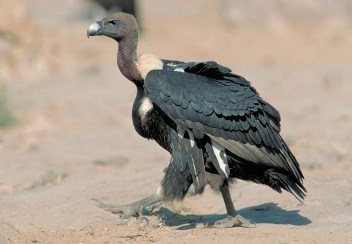 For me an environment journalist who enjoys writing on biodiversity, my previous story on vultures written in 2011 in Planet Earth, exposed the big part the errant drug Diclofenac, had played in the decline of vulture numbers. Apparently now after years of relentless efforts to save the vultures in South Asia , there is encouraging news. BNHS, the UK-based Royal Society for Protection of Birds (RSPB), the Central and State Governments in India and several other organizations under the consortium Saving Asia's Vultures from Extinction (SAVE) have been working on conserving three critically endangered vulture species. And now a new research paper called “The Population Decline of Gyps Vultures in India and Nepal Has Slowed since Veterinary Use of Diclofenac was Banned” by Vibhu Prakash et al from the BNHS, Mumbai, Bird Conservation Nepal, Royal Society for the Protection of Birds, UK, Conservation Science Group, Cambridge, UK shows vulture numbers are beginning to stabilize, with prolonged intervention.
For me an environment journalist who enjoys writing on biodiversity, my previous story on vultures written in 2011 in Planet Earth, exposed the big part the errant drug Diclofenac, had played in the decline of vulture numbers. Apparently now after years of relentless efforts to save the vultures in South Asia , there is encouraging news. BNHS, the UK-based Royal Society for Protection of Birds (RSPB), the Central and State Governments in India and several other organizations under the consortium Saving Asia's Vultures from Extinction (SAVE) have been working on conserving three critically endangered vulture species. And now a new research paper called “The Population Decline of Gyps Vultures in India and Nepal Has Slowed since Veterinary Use of Diclofenac was Banned” by Vibhu Prakash et al from the BNHS, Mumbai, Bird Conservation Nepal, Royal Society for the Protection of Birds, UK, Conservation Science Group, Cambridge, UK shows vulture numbers are beginning to stabilize, with prolonged intervention.
Vultures of the Gyps genus, scavenge on the carcasses of dead animals both wild and domesticated hoofed animals. Throughout the Indian subcontinent, populations of oriental white-backed vulture (Gyps bengalensis), long-billed vulture (Gyps indicus) and slender-billed vulture (Gyps tenuirostris) declined rapidly, starting way back in the 1990s. Previous surveys in India, initially conducted in 1991–1993 and repeated in 2000, 2002, 2003 and 2007, revealed that, by 2007, G. bengalensis had fallen to 0.1% of its numbers in the early 1990s, with populations of G. indicus and G. tenuirostris combined having fallen to 3.2% of their earlier level. There was also a heavy decline of G. bengalensis and G. indicus in Pakistan and of G. bengalensis and G. tenuirostris from areas in Nepal according to the paper.
The writers have explained that populations of several species of vultures worldwide have declined because of various reasons which include: Low availability of their food , they have fatally crashed into man-made structures , and poisoning of vultures by humans deliberately or as a side-effect of poisoning predators and scavengers . All these factors have been the reason for the rapid decline of the Asian Gyps vultures, but research indicated it was also due to a more over arcing reason.
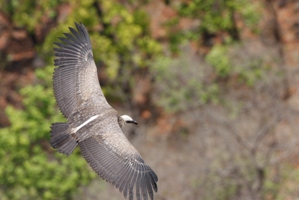 Over the decades, the paper says, scientists have found that the veterinary use of the non-steroidal anti-inflammatory drug (NSAID) diclofenac is the main, and perhaps the only, cause of vulture population decline. When Vultures feed on carcasses of livestock, they also ingest diclofenac as the carcass naturally contains residues of the drug. Vultures that eat large amounts from these carcasses suffer from diclofenac-induced kidney failure and die. The writers have estimated that less than 0.8% of the carcasses available for the vultures to consume, would need to contain a lethal dose of diclofenac, which has caused the dramatic population decline. They also found that the high proportion of G. bengalensis and G. indicus found dead in the wild with severe visceral gout was due to diclofenac poisoning.
Over the decades, the paper says, scientists have found that the veterinary use of the non-steroidal anti-inflammatory drug (NSAID) diclofenac is the main, and perhaps the only, cause of vulture population decline. When Vultures feed on carcasses of livestock, they also ingest diclofenac as the carcass naturally contains residues of the drug. Vultures that eat large amounts from these carcasses suffer from diclofenac-induced kidney failure and die. The writers have estimated that less than 0.8% of the carcasses available for the vultures to consume, would need to contain a lethal dose of diclofenac, which has caused the dramatic population decline. They also found that the high proportion of G. bengalensis and G. indicus found dead in the wild with severe visceral gout was due to diclofenac poisoning.
The scientists had noted that in 2004–2005, the proportion of carcasses of domesticated animals in India treated with diclofenac and the concentration of the drug in their tissues was the cause of the population decline of Gyps Vultures in India . So initially there were efforts made to encourage the voluntary withdrawal of the use of veterinary diclofenac in 2004 which never worked well. Later the licence to manufacture veterinary formulations of diclofenac was withdrawn by the Drug Controller General of India on 11 May 2006 . Similar bans on the veterinary use of diclofenac were also introduced in Nepal and Pakistan in 2006 and in Bangladesh in 2010. The toxicity of diclofenac on vultures and the evidence proving the negative effect on their populations were the reasons for withdrawal.
So why is it important for us to keep our populations of vultures healthy and alive you might ask? Vultures are important to human well-being in the Indian subcontinent, because they dispose of the carcasses of hoofed domestic and wild animals, which would otherwise be left to rot, causing health risks to the population. In Nepal too deaths of vultures have slowed since the use of Diclofenac was banned.
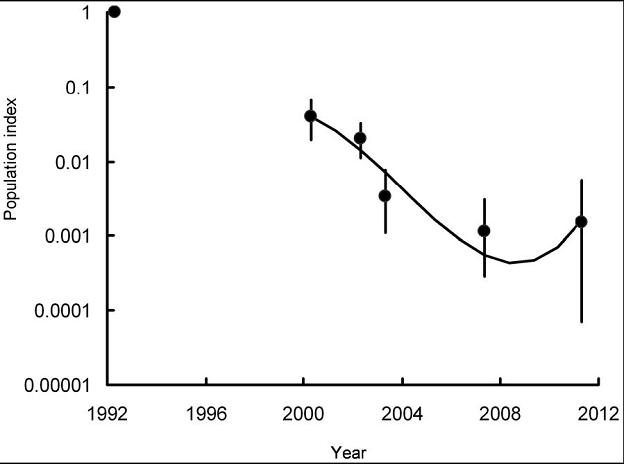
Population indices and trend of Gyps bengalensis. Circles show indices of population density, relative to that in 1992, estimated by specialised surveys in India . Vertical lines show 95% bootstrap confidence limits. The curve shows the population trend for the period 2000–2011.
Looking at the survey results conducted by scientists separately for each species, they calculated the number of vultures recorded per kilometre in the surveys conducted in 2000, 2002, 2003, 2007 and 2011. There was a change from decline to stability or population increase for both species and the results happily indicate that the rapid decline of vulture populations in India and Nepal are slowing down. 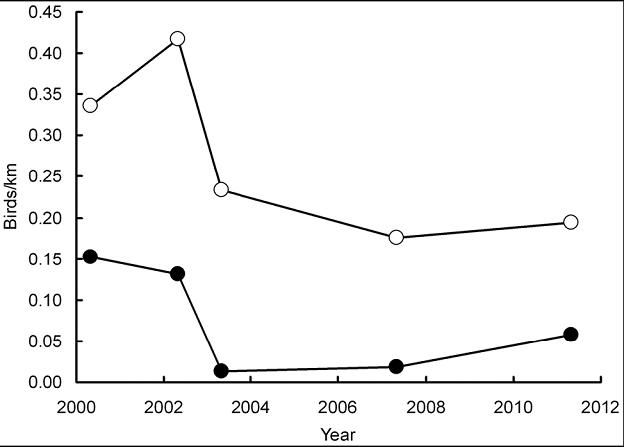
In the above graph, the average numbers of Gyps bengalensis (filled circles) and Gyps indicus (open circles) which the writers have produced show the numbers seen per kilometre of road at selected sites. These are near National Parks in India which contained the majority of records of these species in 2011.
So the wirters conclude that the change in population trend coincides with partially effective voluntary efforts to reduce veterinary use of diclofenac in the Indian subcontinent and the gradual but incomplete implementation of the ban on its veterinary use. Although the ban in India has not yet been completely effective, their analyses suggest that the slowing of the vulture decline in India has been due to the partial removal of diclofenac from the birds' food supply, from results of surveys of diclofenac prevalence and concentration in carcasses of domesticated animals .
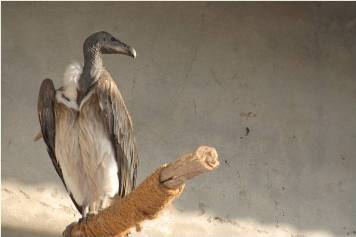 The study suggests continuous monitoring of vulture populations and diclofenac prevalence and efforts to complete the removal of diclofenac and other toxic drugs from the vultures' food supply are essential. Prior to the ban on veterinary diclofenac the vulture population was decreasing at a rate of up to 40% a year. The latest surveys show that in India and Nepal the numbers of the three critically endangered vulture species have remained stable in the last couple of years. Such activities, along with the future release of vultures bred in conservation breeding centres, are required to ensure the establishment and persistence of self-supporting populations of wild vultures in the Indian subcontinent. However, it should be noted that while the stabilization in vulture numbers is encouraging, only a small number of the birds remain and they are still extremely vulnerable.
The study suggests continuous monitoring of vulture populations and diclofenac prevalence and efforts to complete the removal of diclofenac and other toxic drugs from the vultures' food supply are essential. Prior to the ban on veterinary diclofenac the vulture population was decreasing at a rate of up to 40% a year. The latest surveys show that in India and Nepal the numbers of the three critically endangered vulture species have remained stable in the last couple of years. Such activities, along with the future release of vultures bred in conservation breeding centres, are required to ensure the establishment and persistence of self-supporting populations of wild vultures in the Indian subcontinent. However, it should be noted that while the stabilization in vulture numbers is encouraging, only a small number of the birds remain and they are still extremely vulnerable.
Commenting on the positive development, Dr Vibhu Prakash, the lead author of the study and Deputy Director, BNHS said, “The stabilization of vulture numbers across India for all the three critically endangered species is the first sign that the government's ban on veterinary diclofenac is having its desired impact. Continued efforts are still required to protect the remaining small populations, including stopping the illegal use of human diclofenac in the veterinary sector.”
Co-author of the study, Dr Richard Cuthbert from RSPB said, “The stabilisation in numbers of these three critically endangered vulture species in India and Nepal is really encouraging as previously populations were nearly halving in number every year. A lot of hard work still remains to ensure that the small surviving populations can now begin to recover across South Asia and other toxic veterinary drugs do not cause similar impacts like diclofenac.”
With the governments of India and Nepal banning the veterinary use of the painkiller diclofenac in 2006,the immediate effectiveness of this ban in reversing the vulture decline is what the scientists have observed. Scientists from BNHS and RSPB, along with forest departments in various states of India have also been successfully working on vulture breeding, advocacy and field research such as carcass sampling for nearly a decade now. The SAVE consortium launched in 2011 has helped coordinate research, advocacy and implementation of the actions needed to prevent these birds from disappearing forever.
(The writer is an independent media professional and adjunct faculty St. Joseph 's PG College of Media studies, Bangalore )
Comments are moderated


